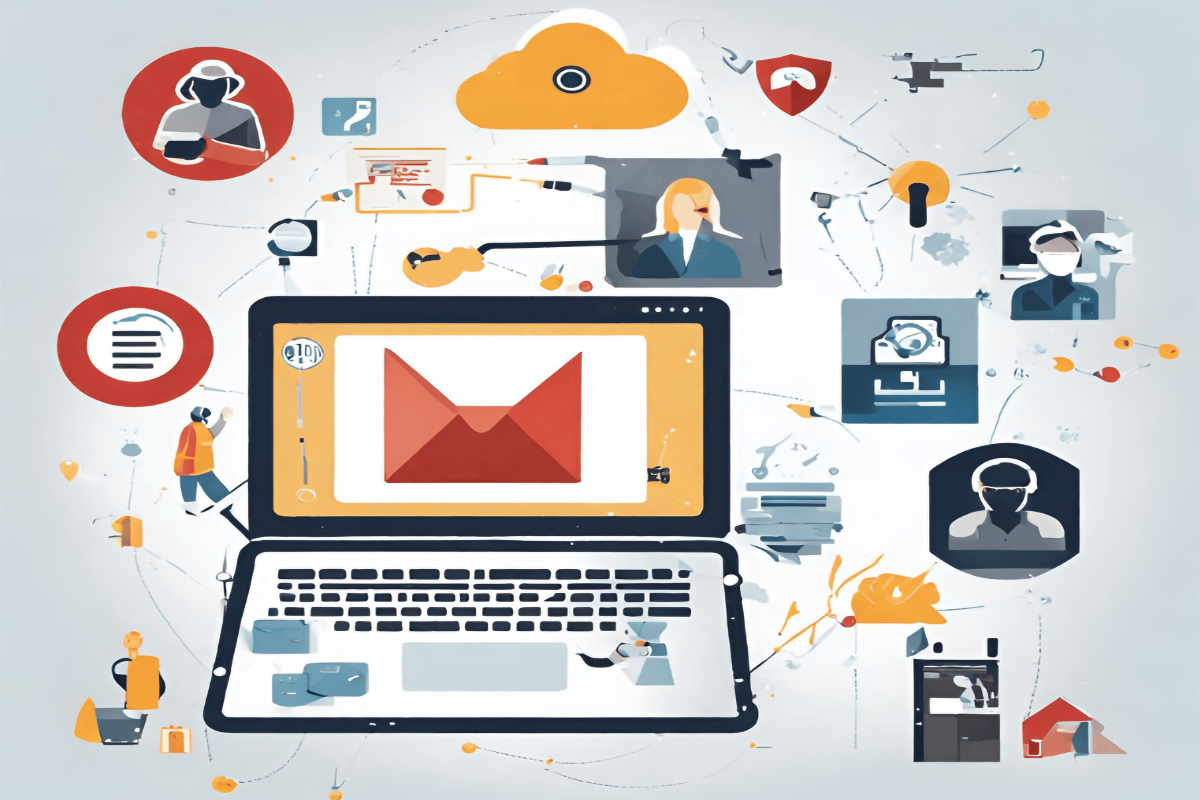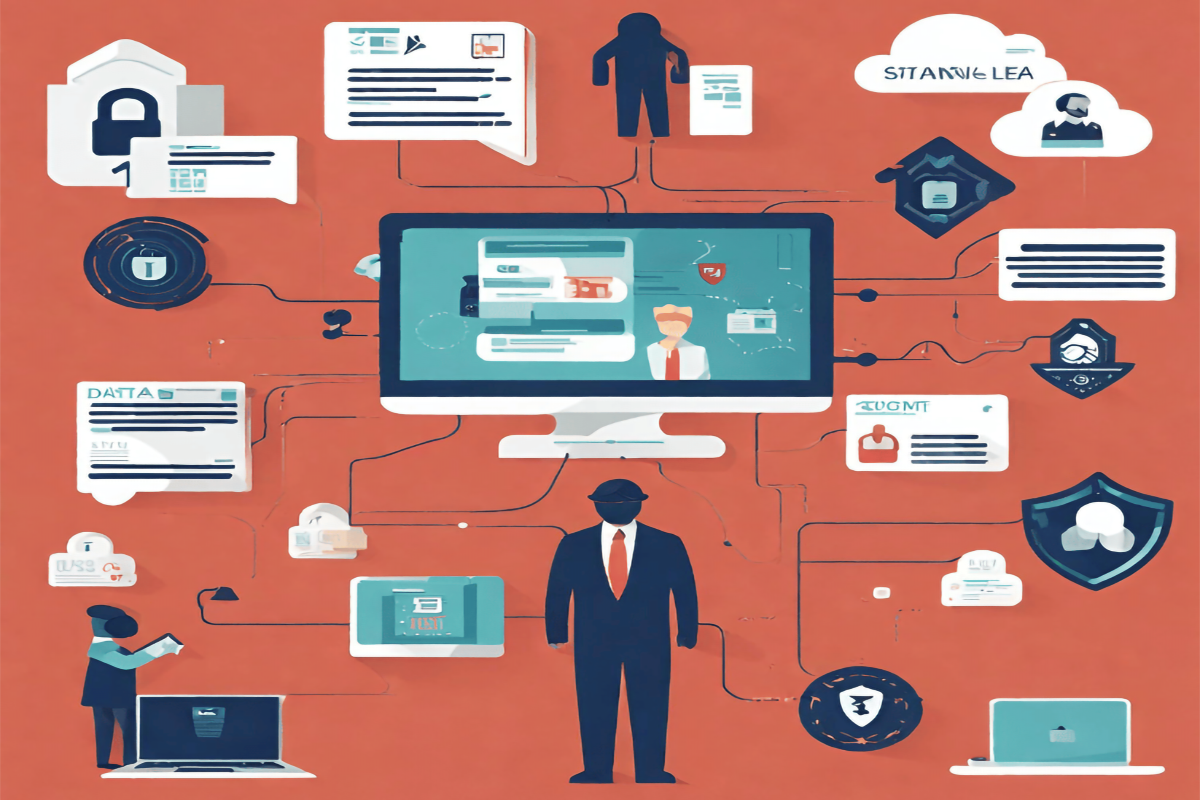A data leak, also known as a data breach, is the unauthorized exposure of sensitive or confidential information, which can range from credit card details and personal data to trade secrets and intellectual property. Data leaks occur for various reasons, including financial gain, espionage, and human error. They can result from factors such as negligence, phishing attacks, weak passwords, and insider threats. To protect against data leaks, organizations should implement encryption, provide employee training, control access to sensitive data, keep software updated, and have a robust incident response plan in place.
What Is a Data Leak?
A data leak, often referred to as a data breach, is an unauthorized exposure of sensitive or confidential information. This could encompass anything from credit card details and social security numbers to trade secrets and intellectual property.
The Motive Behind Data Leaks:
Financial Gain
One of the primary reasons behind data leaks is the prospect of financial gain. Cybercriminals, both independent actors and organized groups, often target organizations to steal valuable data they can monetize. This may involve selling stolen credit card information on the dark web, extorting businesses for ransom, or engaging in identity theft for illicit financial gains.
Espionage and Sabotage
In some cases, data leaks are orchestrated for espionage and sabotage. Nation-states and corporate competitors may infiltrate systems to steal sensitive information that can provide a strategic advantage. They might aim to disrupt operations, gain insights into an opponent’s plans, or undermine the target’s reputation by exposing damaging information.
Hacktivism

Hacktivism is a blend of hacking and activism, where individuals or groups with a social or political agenda breach systems to draw attention to their cause. These actors often leak sensitive data to expose perceived wrongdoing, generate public outrage, or raise awareness about a particular issue.
Common Causes of Data Leaks:

Human Error:
One of the primary reasons behind data leaks is human error. No matter how advanced our technology becomes, human beings remain an integral part of data management processes. Unfortunately, humans are prone to mistakes, and these mistakes can lead to data breaches.
1. Negligence
Negligence is a significant contributor to data leaks. Employees, intentionally or unintentionally, may mishandle data. This can include leaving sensitive documents unattended, sharing passwords, or failing to update security settings. Such lapses in judgment can open the door to data breaches.
2. Lack of Training
Insufficient training on data security protocols can also lead to data leaks. When employees are not aware of the best practices for safeguarding data, they are more likely to make errors that could compromise security.
Cyberattacks:
Cybercriminals are constantly devising new ways to infiltrate systems and steal data for various malicious purposes.
3. Phishing Attacks
Phishing attacks are a prevalent form of cybercrime. In these attacks, perpetrators pose as trustworthy entities through emails or messages to trick individuals into revealing sensitive information like passwords or credit card details.
4. Malware and Ransomware
Malware and ransomware are malicious software programs designed to infiltrate and disrupt computer systems. They can encrypt or steal data, often demanding a ransom for its release. Falling victim to such attacks can result in data leaks.
Inadequate Security Measures
Another reason for data leaks is the failure to implement robust security measures.
5. Weak Passwords
Weak or easily guessable passwords are an open invitation to data breaches. When individuals or organizations fail to create strong passwords or regularly update them, they leave their data vulnerable to hackers.
6. Outdated Software
Failing to keep software and systems up to date can create vulnerabilities that hackers can exploit. Software updates often include security patches that protect against known threats.
Insider Threats
Sometimes, the threat to data security comes from within an organization itself.
7. Disgruntled Employees
Employees who are dissatisfied with their jobs or feel mistreated may intentionally leak sensitive information out of revenge or for personal gain.
8. Accidental Insider Threats
Accidental insider threats occur when well-intentioned employees inadvertently expose sensitive data. This can happen through misdirected emails or unintentional sharing of confidential information.
Lack of Encryption
Data encryption is a critical component of data security. Without encryption, data is more susceptible to interception and leakage.
9. Unencrypted Data Transmission
When data is transmitted without encryption, it can be intercepted by hackers during transit, potentially leading to a data leak.
10. Unencrypted Storage
Storing sensitive data without encryption is another risk. If unauthorized individuals gain access to storage devices or databases, they can easily access and steal unencrypted data.
Different Types of Data Leaks

Financial Information
Financial data leaks involve the exposure of sensitive financial information, such as credit card numbers, bank account details, and transaction histories. Cybercriminals often target financial institutions and e-commerce platforms to obtain this valuable data.
Identity Theft
Identity theft occurs when personal information, such as Social Security numbers, names, addresses, and dates of birth, is stolen. Criminals can use this data to open fraudulent accounts, commit financial fraud, or engage in other illegal activities.
Electronic Health Records (EHR) Breaches
Healthcare organizations store vast amounts of patient data in electronic health records (EHR). Breaches of EHR systems can expose patients’ medical histories, diagnoses, and even prescription information. This type of data leak can lead to medical identity theft and privacy violations.
Pharmaceutical Research Data
Pharmaceutical companies and research institutions handle sensitive data related to drug development and clinical trials. Leaks of this information can have significant financial and ethical implications, as competitors or malicious actors may gain access to proprietary research.
Employee Information
The compromise of employee data, including payroll information, Social Security numbers, and personnel records, can occur due to data breaches in corporate HR systems. Such leaks can lead to identity theft and financial fraud among employees.
National Security Breaches
Government and military data leaks pose grave national security risks. Unauthorized disclosure of classified information, military strategies, and intelligence can compromise a nation’s security and diplomatic relations.
Student Records
Educational institutions collect vast amounts of data on students, including academic records, contact information, and sometimes financial details. Leaks of student records can result in privacy violations and academic fraud.
Research Data
Universities and research institutions often conduct sensitive research. Breaches involving research data can harm academic reputations and compromise ongoing projects.
Protecting Against Data Leaks
Encryption
Implement robust encryption protocols to protect sensitive data both in transit and at rest. Encryption makes it significantly more challenging for unauthorized parties to access valuable information.
Employee Training
Train your employees on cybersecurity best practices, emphasizing the importance of handling data securely. Educated employees are a crucial line of defense against data leaks.
Access Control
Limit access to sensitive data to only those who need it for their job responsibilities. Implement role-based access control and regularly review permissions.
Regular Updates
Keep your software and systems up to date. Cybercriminals often exploit known vulnerabilities, so staying current with security patches is essential.
Incident Response Plan
Develop a comprehensive incident response plan that outlines the steps to take in the event of a data leak. Quick and effective action can mitigate the damage.
Conclusion:
Data leaks, or data breaches, pose a significant and evolving threat in today’s digital landscape. They can occur for a variety of reasons, ranging from financial gain and espionage to human error and inadequate cybersecurity measures. Understanding the motives behind data leaks and their common causes is crucial for individuals and organizations alike. To protect against data leaks, implementing strong encryption, providing employee training, enforcing access controls, keeping software up to date, and having a well-defined incident response plan are vital steps.
Frequently Asked Questions About Data Leaks
What are the most prevalent causes of data leaks?
Data leaks can result from a range of causes. Still, the primary ones include human error, cyberattacks like phishing and malware, inadequate security measures, and insider threats from both disgruntled employees and accidental mistakes.
What types of information are often targeted in data leaks?
Cybercriminals typically target sensitive information such as financial data (credit card numbers, bank accounts), personal information (Social Security numbers, names, addresses), electronic health records, pharmaceutical research data, employee information, national security-related data, student records, and research data.
How can organizations protect themselves against data leaks?
Organizations can take several steps to protect against data leaks, including implementing robust encryption, providing comprehensive employee training on cybersecurity, controlling access to sensitive data, keeping software and systems up to date, and having a well-defined incident response plan in place.
What is access control, and why is it essential in data leak prevention?
Access control refers to the practice of limiting access to sensitive data to only those individuals who require it for their job responsibilities. Implementing role-based access control and regularly reviewing permissions helps prevent unauthorized access to sensitive information.
Why are regular software updates necessary in data leak prevention?
Regular software updates are essential because they often include security patches that protect against known vulnerabilities. Failing to keep software and systems up to date can create opportunities for cybercriminals to exploit these vulnerabilities.
